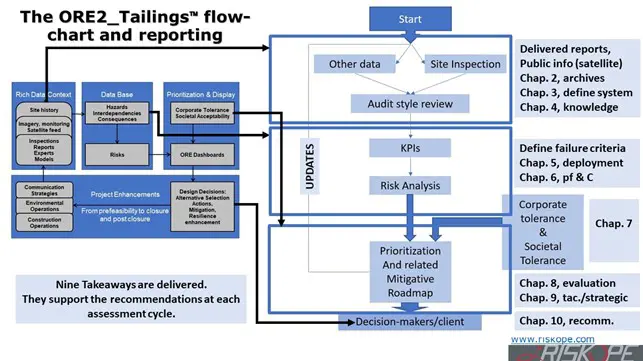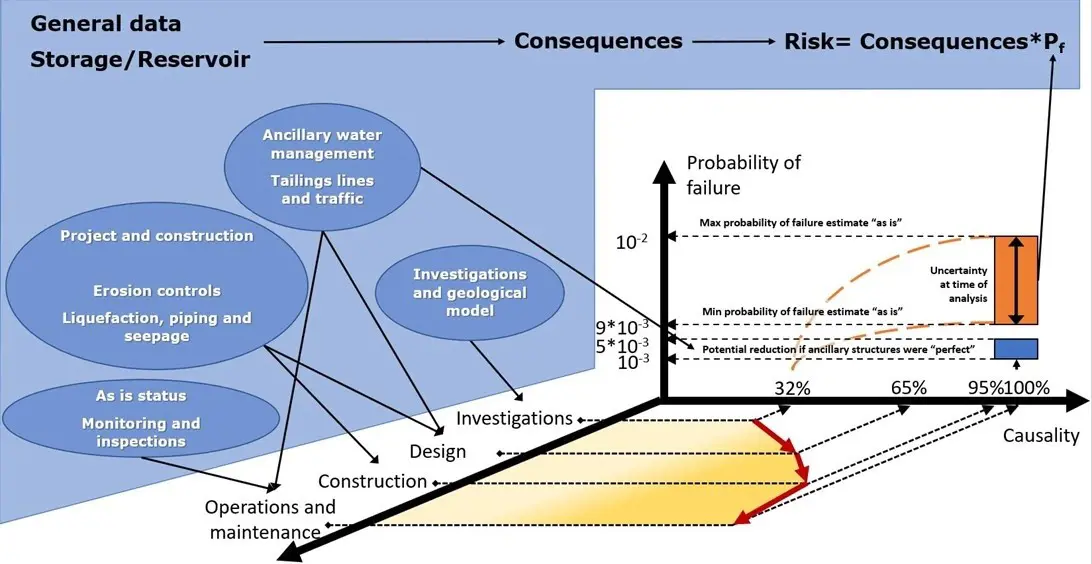The first ORE2_Tailings™ deployment for a given client and selected TSF portfolio is an a priori endeavor insofar as it delivers estimates that require calibration and adaptation as new data and new events arrive. In particular, this report will require amendments and updates when new satellite or other monitoring results, corrective action reports, changes in service conditions, new incident reports and inspections, etc. become available.
ORE2_Tailings Technical Explanations: Diagnostic Points
ORE2_Tailings is a subset of the ORE platform specific to tailings dams, accompanied by ORE2_Dams™ and ORE2_Dykes™. ORE2_Tailings uses diagnostic points in the history of the dam from inception to the day of the evaluation. In addition, it uses data and information related to ancillary water management, pipelines, water balance and traffic at the crest. ORE2_Tailings is compliant with the Global Industry Standard on Tailings Management (GISTM) and its conformance protocol. The approximately forty diagnostic points are key performance indicators (KPIs) and key risk indicators (KRIs). ORE2_Tailings combines them with the results of engineering analyses (Factor of Safety, settlements, liquefaction), information drawn from the history of the structure since inception and, if available, satellite observations.
Depending on the mandate, travel restrictions, quality of the archival documents and goal of the study, site inspections may be postponed to a later date. It is possible to perform a first round of a priori prioritization using archival data and available imagery, though the level of uncertainty of such a study will be higher than if more data and site visits were available. However, given that the goal is to perform a prioritization of relative risks, a client may deem such an approach sufficient as a first step.
The evaluations of the KPIs/KRIs are mathematically combined in the risk analysis. Consequences of a failure and its probabilities generate the risk evaluation, including related uncertainties. Explicit consideration of uncertainties is a fundamental step towards reasonable and defensible risk assessments. ORE2_Tailings always considers the dams and their respective or common ancillary water management systems.
ORE2_Tailings Technical Explanations: Causality
The KPIs/KRIs cover the life of the dam system from inception and converge on “families” of causality, such as investigation and material testing, design, construction and operations and maintenance (including monitoring). Causality analysis can be paramount in guiding mitigative decision-making.
The figure below conceptually displays the combination of the KPIs in the four aggregated causality families, probability of failure, consequences and risks.
As visible in the illustration above, the probability of failure resulting from the composition of the KPIs evolves during the dam life while maintaining a certain level of uncertainties.


